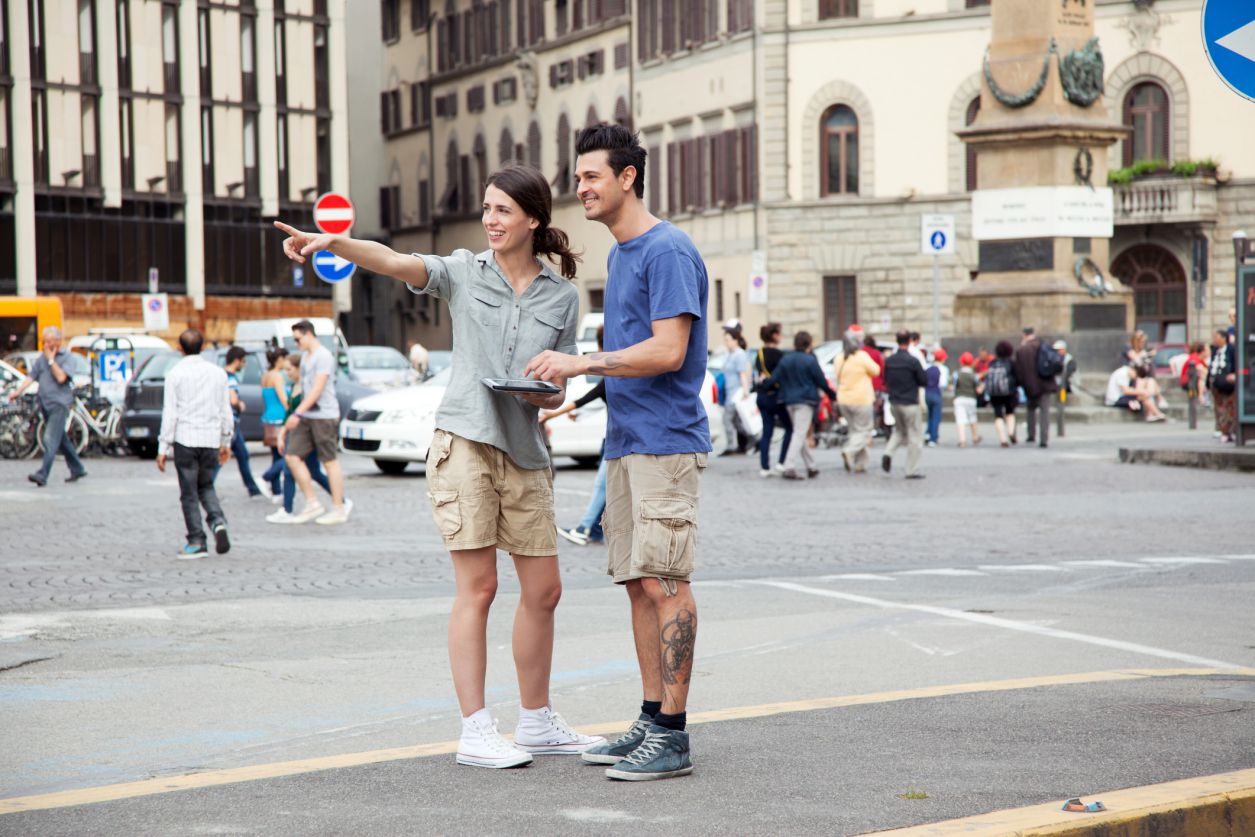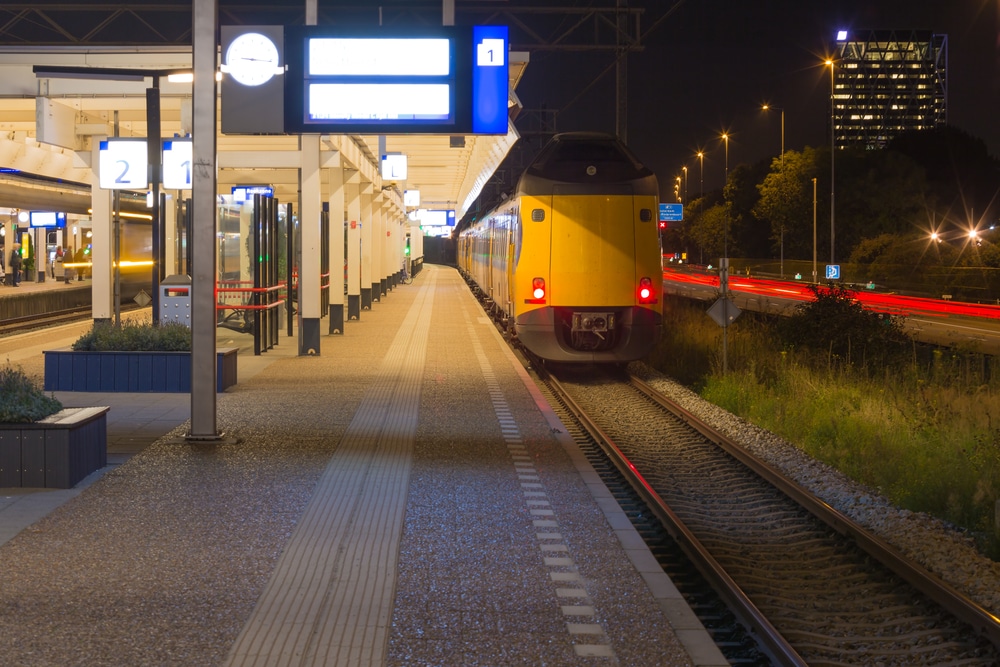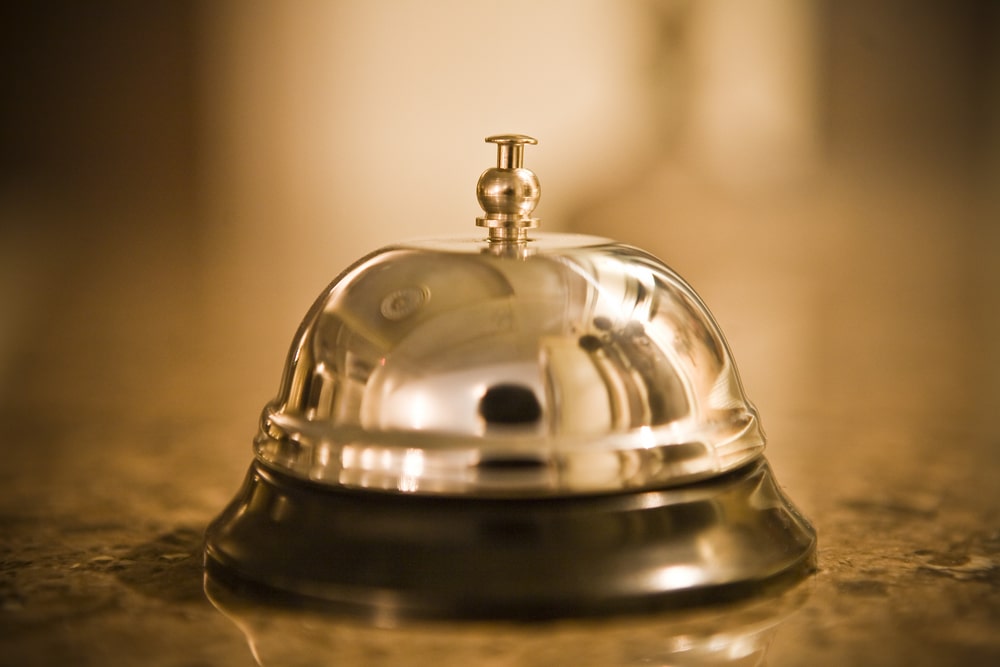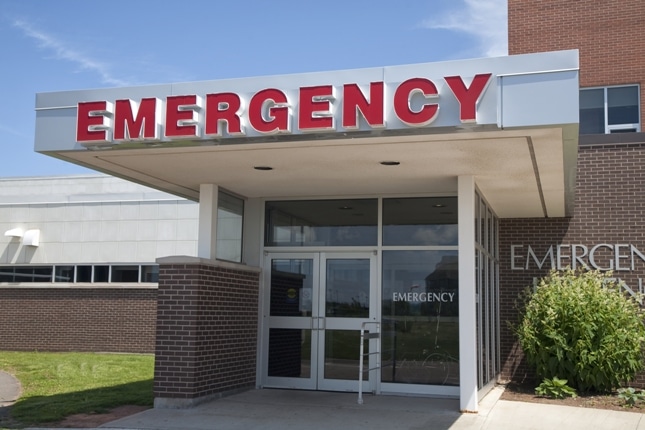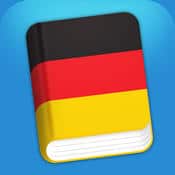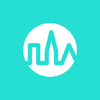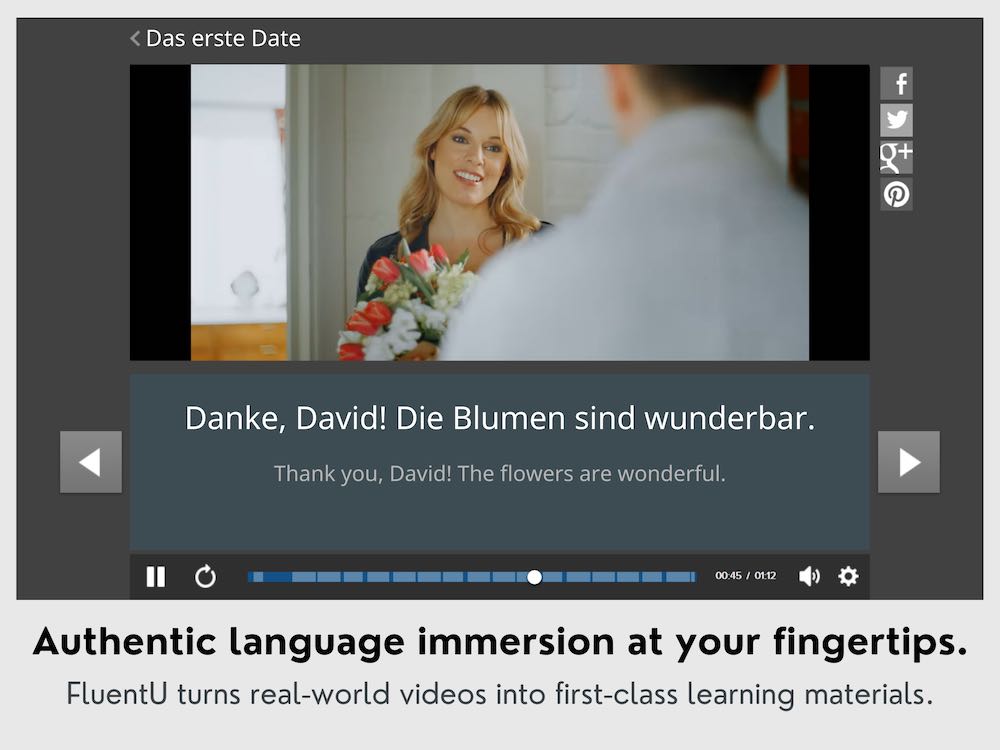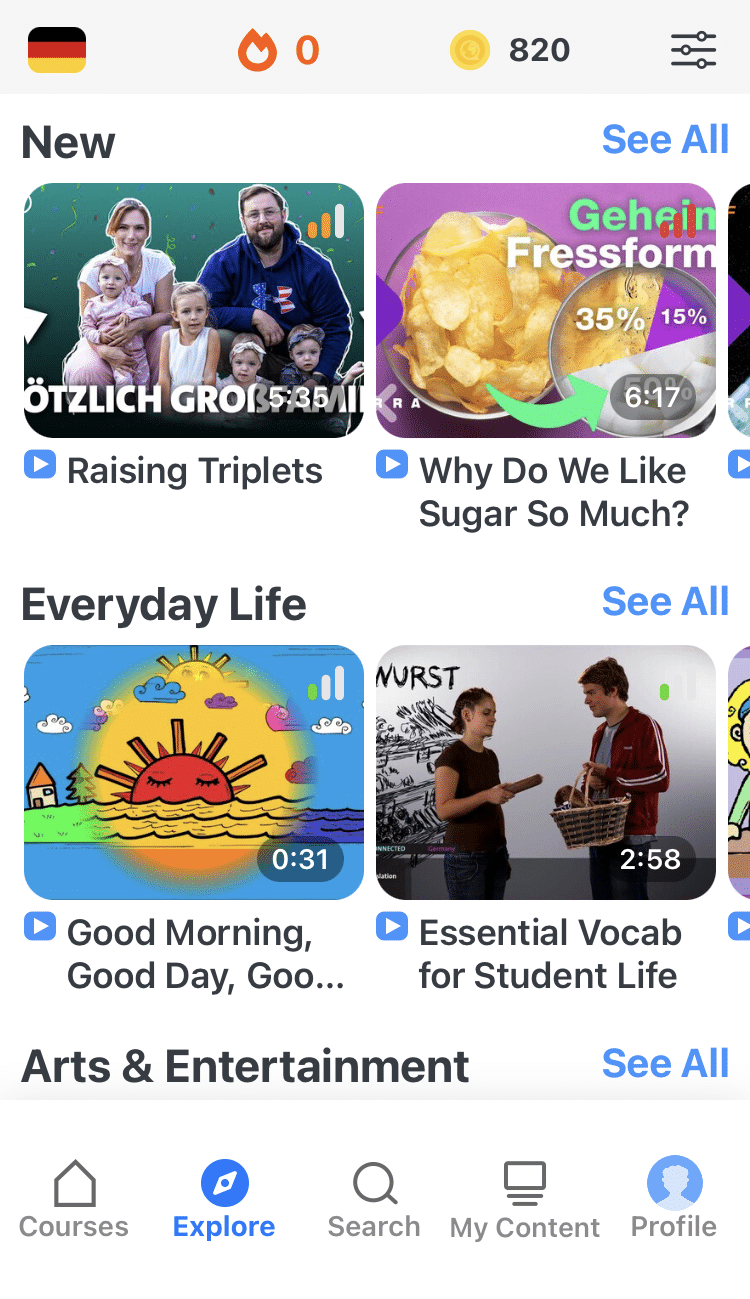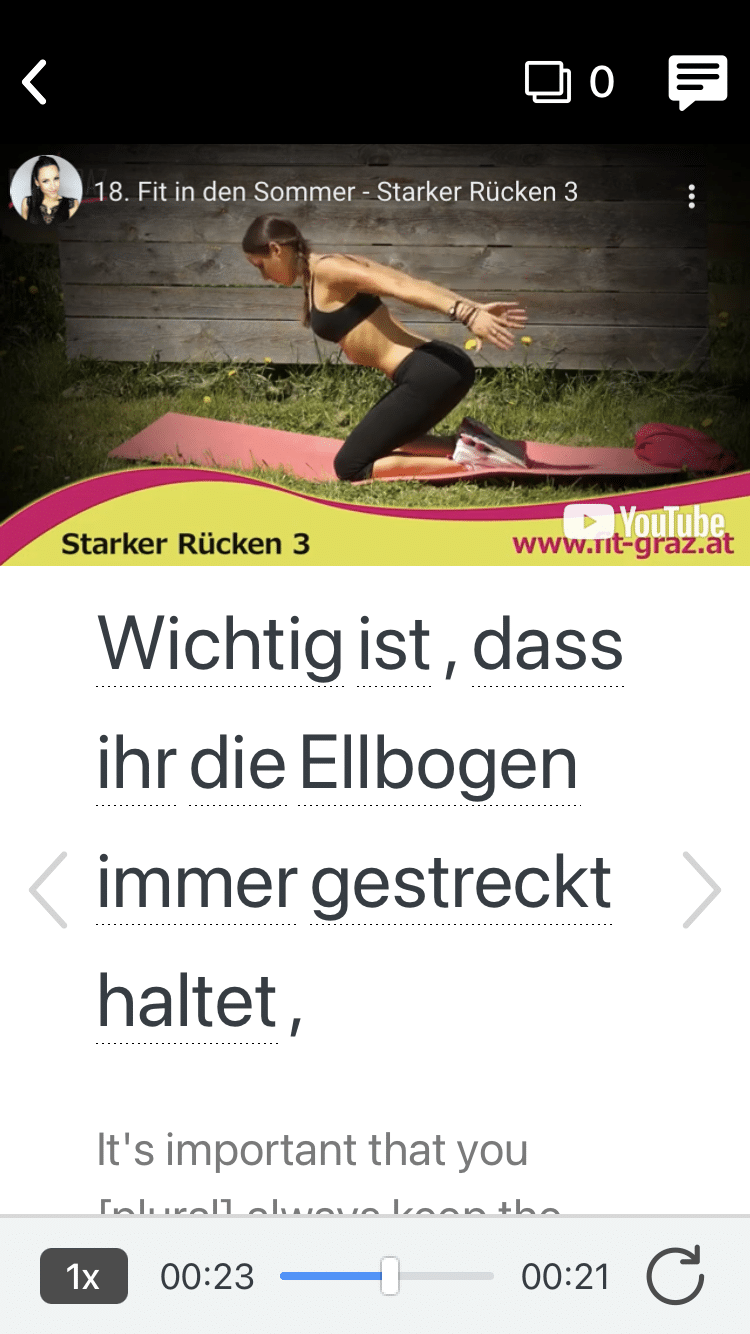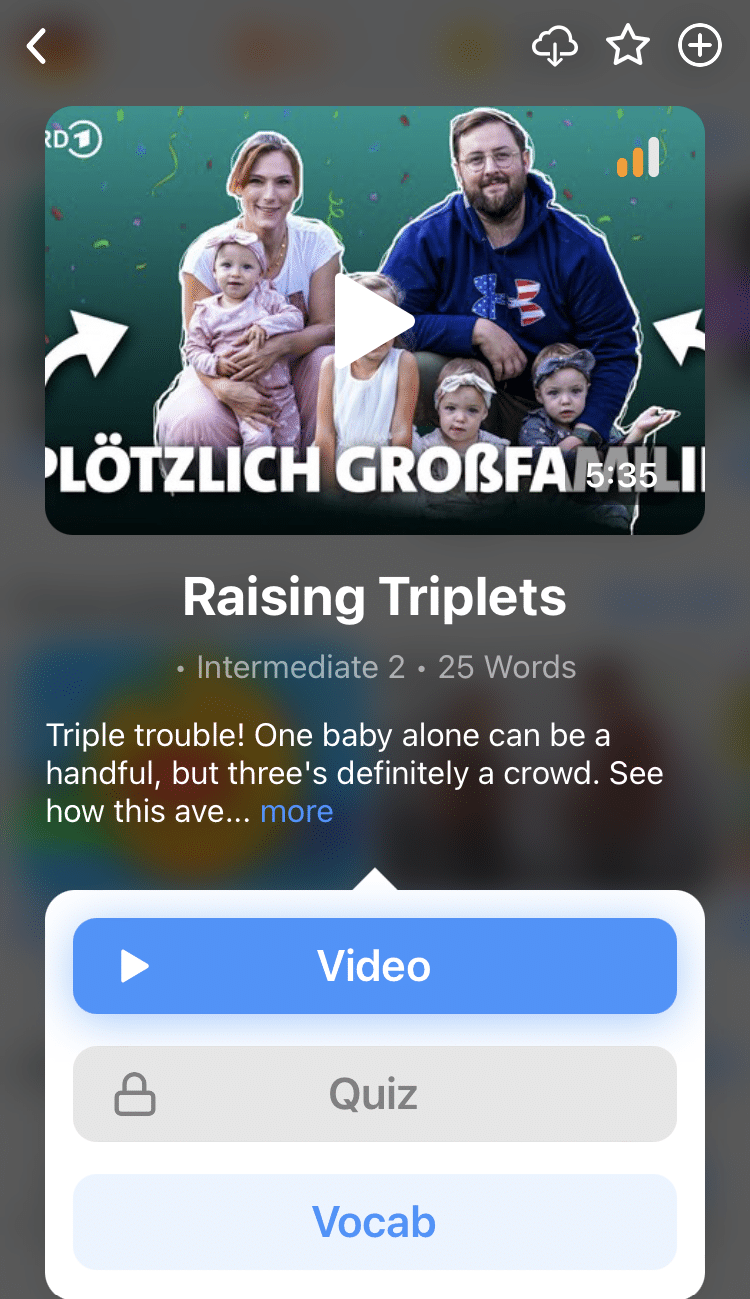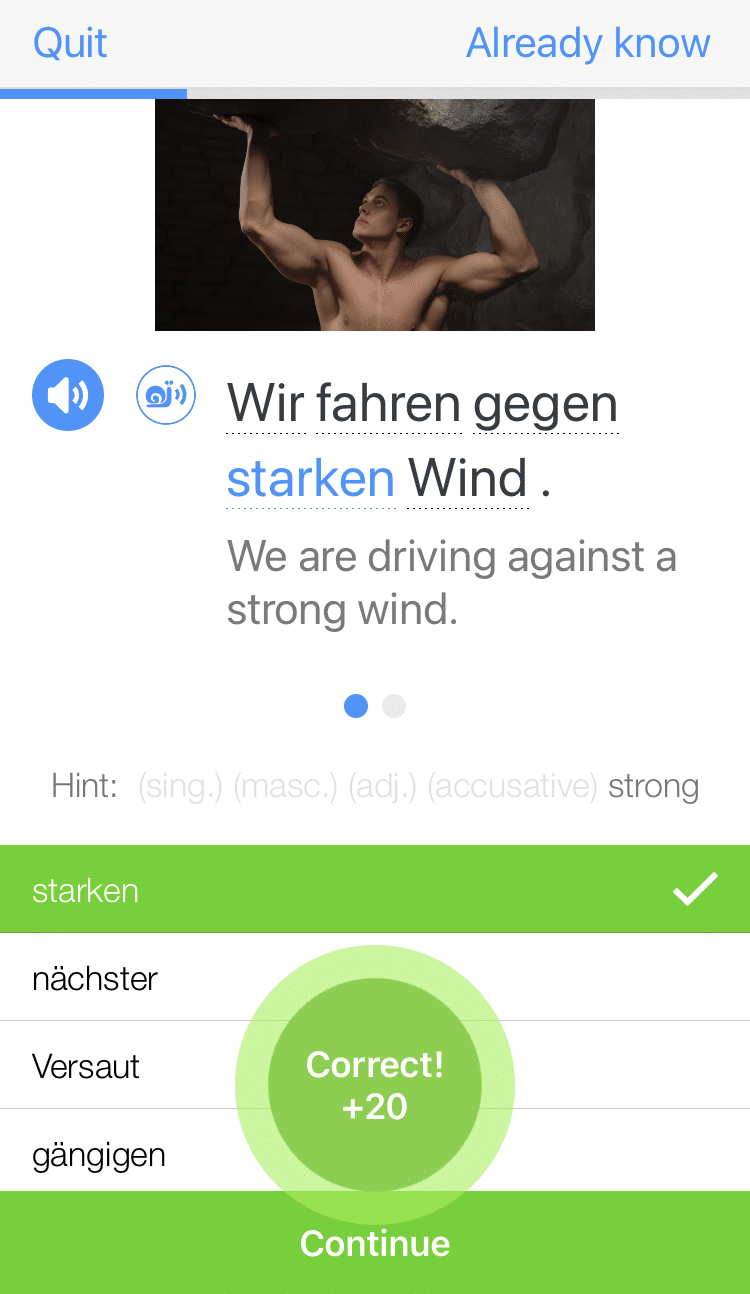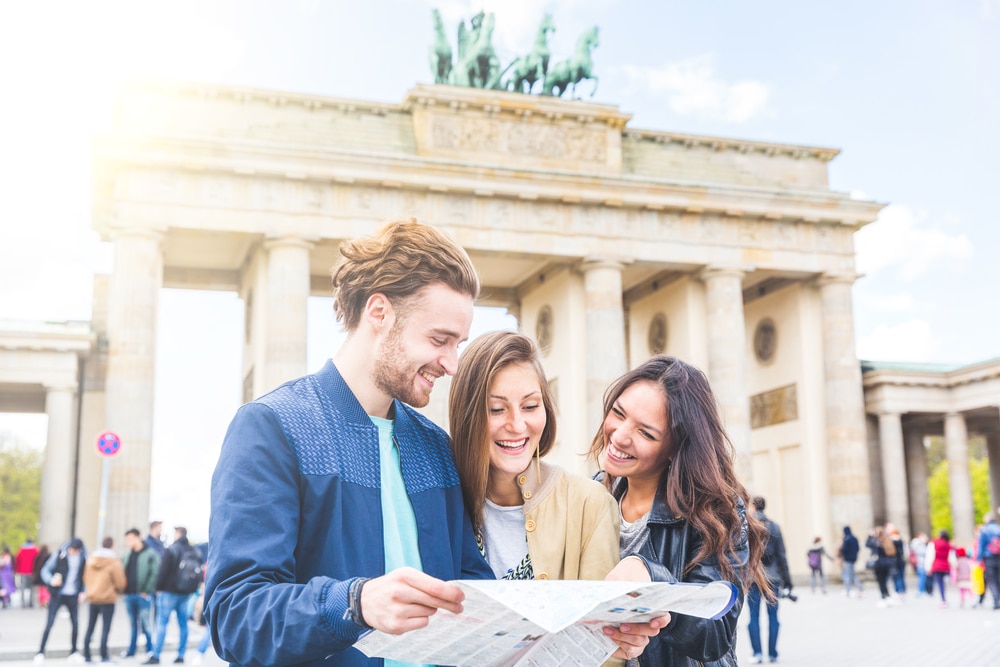
136 Useful German Travel Phrases
Planning your big trip to Germany is so exciting—but you’re not done until you’ve brushed up on common German phrases for travel.
In this post, you’ll find a handy phrasebook of German travel phrases and vocabulary, conveniently organized by group. You’ll also learn about some great resources, such as travel language guides and handy apps for your smartphone.
Contents
- German Greetings, Introductions and Goodbyes
- German Expressions for Shopping
- German Travel Phrases for the Restaurant
- German Words and Phrases for Directions
- German Travel Phrases for Public Transportation
- German Travel Phrases for the Hotel
- German Phrases for Getting Around the City
- German Words and Expressions for Emergencies
- German Expressions for Language Help
- German Guides for Traveling
- German Apps for Travelers
- Why You Should Learn German Travel Phrases
- And One More Thing...
Download: This blog post is available as a convenient and portable PDF that you can take anywhere. Click here to get a copy. (Download)
German Greetings, Introductions and Goodbyes
Please note that most of these German sentences are in the formal Sie conjugation. For your travel purposes, this form should be just fine, although native speakers may opt to use different pronoun forms with you depending on the context.
| German | English |
|---|---|
| Hallo! | Hello! |
| Guten Morgen! | Good morning! |
| Guten Tag! | Good day! |
| Guten Abend! | Good evening! |
| Ich heiße... | My name is... |
| Wie heißen Sie? | What's your name? |
| Wie geht’s? | How are you? |
| Mir geht’s gut. | I’m doing well. |
| Mir geht’s nicht gut. | I’m not doing well. |
| Ich komme aus... ...den USA. ...Kanada. ...Australien. ...Großbritannien. | I'm from... ...the USA. ...Canada. ...Australia. ...Great Britain. |
| Wie lange bleiben Sie in... ...Deutschland? ...Österreich? ...der Schweiz? | How long are you staying in... ...Germany? ...Austria? ...Switzerland? |
| Ich bleibe...hier. ...eine Woche... ...zwei Wochen... ...drei Wochen... | I'm staying here for... ...one week... ...two weeks... ...three weeks... |
| Bis später! | See you later! |
| Bis später! | See you later! |
| Tschüß | Bye! |
German Expressions for Shopping
| German | English |
|---|---|
| Haben Sie Andenken? | Do you have souvenirs? |
| Verkaufen Sie...? | Do you sell...? |
| Wie viel kostet das? | How much is that? |
| Ich kann nur...Euro zahlen. | I can only pay...euros. |
| Ich habe nur...Euro dabei. | I only have...euros with me. |
| Kann ich das für...Euro kaufen? | Can I buy that for...euros? |
| Haben Sie etwas Billigeres? | Do you have something cheaper? |
| Haben Sie das in einer...Größe? ...kleineren... ...größeren... | Do you have that in a...size? ...smaller... ...bigger... |
| Um wieviel Uhr...das Geschäft? ...öffnet... ...schließt... | What time does the shop...? ...open... ...close... |
| Was möchten Sie? | What would you like? |
| Was suchen Sie? | What are you looking for? |
| Darf ich mit Bargeld bezahlen? | May I pay with cash? |
| Darf ich mit Kreditkarte bezahlen? | May I pay with credit card? |
German Travel Phrases for the Restaurant
| German | English |
|---|---|
| Einen Tisch für..., bitte. ...zwei... ...drei... ...vier... | A table for..., please. ...two... ...three... ...four... |
| Ich habe einen Tisch reserviert. | I reserved a table. |
| Kann ich bitte die...sehen? ...Speisekarte... ...Weinkarte... | Can I see the..., please? ...menu... ...wine list... |
| Ich hätte gern… | I would like... |
| Was ist der Unterschied zwischen…und…? | What’s the difference between...and...? |
| Mit laktosefreier Milch, bitte. | With lactose-free milk, please. |
| Ist das glutenfrei? | Is that gluten-free? |
| Haben Sie vegetarisches Essen? | Do you have vegetarian food? |
| Ein Glas Wasser, bitte. | A glass of water, please. |
| Sprudel, bitte. | Sparkling, please. |
| Ein Glas Leitungswasser, bitte. | A glass of tap water, please. |
| Kellner! / Kellnerin! | Waiter! / Waitress! |
| Die Rechnung, bitte. | The check, please. |
| Frühstück | Breakfast |
| Mittagessen | Lunch |
| Abendessen | Dinner |
| Zum Wohl! | Cheers! |
| Prost! | Cheers! |
| Guten Appetit! | Enjoy your meal! |
| Salz | Salt |
| Pfeffer | Pepper |
| Zucker | Sugar |
| Scharf | Spicy |
| Süß | Sweet |
| Sauer | Sour |
| Serviette | Napkin |
| Teller | Plate |
| Gabel | Fork |
| Löffel | Spoon |
| Messer | Knife |
| Glas | Glass |
| Tasse | Cup |
| Noch einmal, bitte! | Another one, please! |
| Wo ist die Toilette? | Where's the bathroom? |
| Herren / Männer | Men |
| Damen / Frauen | Women |
| Darf ich eine Quittung haben, bitte? | Can I have a receipt, please? |
German Words and Phrases for Directions
| German | English |
|---|---|
| Wo? | Where? |
| Entschuldigung, wo ist...? | Excuse me, where is...? |
| In welcher Richtung ist...? | In what direction is...? |
| Ist es in der Nähe? | Is it nearby? |
| Ist es weit weg? | Is it far away? |
| Wo ist der... ...Eingang? ...Ausgang? | Where is the... ...entrance? ...exit? |
| Bringen Sie mich bitte zu dieser Adresse. | Please bring me to this address. |
| Zum Stadtzentrum, bitte. | To the city center, please. |
| Zum Bahnhof, bitte. | To the train station, please. |
| Zum Flughafen, bitte. | To the airport, please. |
| Es ist da. | It’s there. |
| Da ist es. | There it is. |
| Um die Ecke | Around the corner |
| Nach links | To the left |
| Nach rechts | To the right |
| Geradeaus | Straight ahead |
| Oben | Upstairs |
| Unten | Downstairs |
| Zurück | Back |
| Halten Sie bitte hier an. | Please stop here. |
| Nord | North |
| Süd | South |
| Ost | East |
| West | West |
German Travel Phrases for Public Transportation
| German | English |
|---|---|
| Wo ist die Bushaltestelle? | Where is the bus stop? |
| Wo ist die U-Bahn? | Where is the underground train (subway/metro)? |
| Wie viel kostet eine Fahrkarte nach...? | How much is a ticket to...? |
| Fährt dieser Zug nach...? | Does this train go to...? |
| Wohin fährt dieser Bus? | To where does this bus go? |
| Darf ich bitte einen Stadtplan haben? | May I have a city map, please? |
| Darf ich bitte einen U-Bahnplan haben? | May I have an underground train map, please? |
| Können Sie mir das auf der Karte zeigen? | Can you show me on the map? |
| Muss ich umsteigen? | Do I have to change? |
German Travel Phrases for the Hotel
| German | English |
|---|---|
| Ich habe eine Reservierung. | I have a reservation. |
| Haben Sie noch ein Zimmer frei? | Do you have a free room? |
| Können Sie mir ein anderes Hotel empfehlen? | Can you recommend another hotel? |
| Ich hätte gern ein Zimmer. | I'd like a room. |
| Ich bleibe... ...eine Nacht. ...zwei Nächte. ...drei Nächte. | I'm staying.... ...one night. ...two nights. ...three nights. |
| Ist Frühstück inklusiv? | Is breakfast included? |
| Können Sie mich um...Uhr wecken? | Can you wake me up at...o’clock? |
| Zimmerdienst | Room service |
| Dusche | Shower |
| Einzelzimmer | Single room |
| Klimaanlage | Air conditioning |
| Schlüssel | Key |
| Um wie viel Uhr muss man auschecken? | What time is check-out? |
German Phrases for Getting Around the City
| German | English |
|---|---|
| Wo ist die Bank? | Where is the bank? |
| Ist die Post im Stadtzentrum? | Is the post office in the city center? |
| Wo ist der beste Supermarkt? | Where is the best supermarket? |
| Wo ist die leckerste Bäckerei? | Where is the tastiest bakery? |
| Wo ist die nächste Tankstelle? | Where is the nearest gas station? |
| Ist der Bahnhof neben dem Fluss? | Is the train station next to the river? |
| Ist der Flughafen weit weg? | Is the airport far away? |
German Words and Expressions for Emergencies
| German | English |
|---|---|
| Hilfe! | Help! |
| Ich brauche die Polizei. | I need the police. |
| Ich habe...verloren. ...meine Tasche... ...mein Portemonnaie... | I’ve lost... ...my bag... ...my wallet... |
| Jemand hat meine Tasche genommen. | Someone took my bag. |
| Wo ist das Krankenhaus? | Where is the hospital? |
| Wo ist die Apotheke? | Where is the pharmacy? |
| Mir geht's schlecht. | I don't feel well. |
| Haben Sie Aspirin? | Do you have aspirin? |
| Lassen Sie mich in Ruhe. | Leave me alone. |
| Fassen Sie mich nicht an! | Don’t touch me! |
| Es ist ein Notfall. | It's an emergency. |
| Ich habe mich verlaufen. | I got lost. |
| Wie komme ich zur...Botschaft? ...amerikanischen... ...kanadischen... ...australischen... ...britischen... | How do I get to the...embassy? ...American... ...Canadian... ...Australian... ...British... |
German Expressions for Language Help

| German | English |
|---|---|
| Ich verstehe nicht. | I don’t understand. |
| Können Sie das bitte wiederholen? | Can you repeat that please? |
| Sprechen Sie Englisch? | Do you speak English? |
| Ich spreche nur ein wenig Deutsch. | I only speak a little German. |
| Können Sie das ins Englische übersetzen? | Can you translate that into English, please? |
German Guides for Traveling
A trusty guide fits in your backpack or purse, and it serves as a way to look up unfamiliar words and phrases or brush up on vocab while traveling from one place to another. Here are some recommendations:
“Rick Steves’ German Phrase Book and Dictionary”

You can’t go wrong with Rick Steves, since the man has traveled all over Europe (numerous times), hosted his own travel show and written dozens of bestselling guides for European travel.
From meeting new people to ordering a bratwurst, this guide outlines the most common everyday phrases to further improve your travel lingo. It also comes with phonetic spellings, currency information, rail transportation guides and a cheat sheet that you can tear out and slide in your pocket.
“German Survival Guide”

This guide can give you the confidence to speak with people while traveling through Germany and Austria. It touches on cultural points and shows you how to interact with German speakers a various spots such as the Autobahn, grocery stores, ice cream parlors and more.
It includes vocabulary and basic German instruction, with travel and study tips scattered throughout the entire guide. It’s a rather helpful book for your travels if staying in Germany or Austria for quite some time.
Lonely Planet German Phrasebook and Dictionary
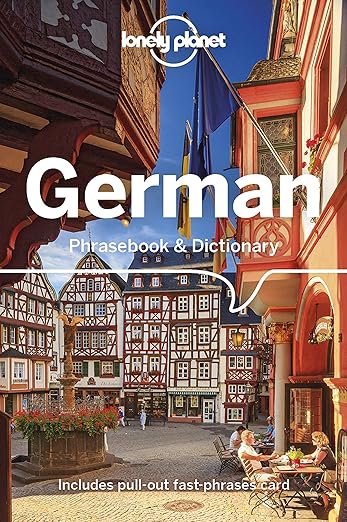
This German phrasebook has a huge section for decoding restaurant menus and ordering food properly, plus a 3,500-word two-way German-English dictionary.
The cultural manners section can prevent you from embarrassing yourself or making others feel uncomfortable and help you feel at ease while traveling.
Lonely Planet at large has tons of German phrasebook and travel guide options available on their site. Read these ahead of time to know what to expect wherever you go, then bring them on your trip to whip out at a moment’s notice.

“Perfect Phrases in German for Confident Travel”
Context and manners are extremely important when going to Germany, just like they are in every country. If you insult a person’s language, why would they talk to you in return?
The “Perfect Phrases” book details the proper words and phrases to use while traveling, while also discussing faux pas and how they can hurt your conversation.
“Point it: Traveller’s Language Kit”
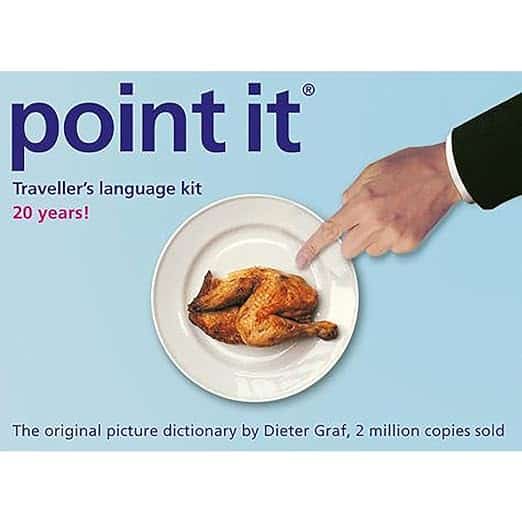
This guide may not help you much with your pronunciation, but it’s an essential tool to bring with you while traveling in German-speaking countries.
The “Point It” book has 1,300 images and words, so you can point at the images when your speaking abilities fail. For example, point to the picture of a chicken when ordering at a restaurant.
German Apps for Travelers
A good app can serve as a viable replacement for a travel and language guide that doesn’t add any weight to your pack. Plus, the apps generally offer audio to hear how to pronounce certain words and phrases. Here are some great options:
Learn German Phrases & Words: Phrases for Travel in Germany
The Learn German Phrases & Words app is designed to boost your speaking capabilities while traveling. It can be used without an internet connection, so you can always depend on it.
The visual guide has carefully categorized sections like greetings, eating, romance and health. The app has over 800 common German phrases, and the German-speaking parrot pronounces everything for you.
Learn German – Phrasebook
This phrasebook is free, but you can upgrade to receive all of the phrases and words for your travels. The app works as a quick reference perfect for tourists visiting Germany.
The main page shows categories like numbers, general conversation and transportation. Once you select a category and phrase, it gives you the option to hear a spoken version and slow down the audio for better understanding.
Wie Geht‘s German
The Wie Geht‘s app provides a few lessons with audio tracks that are useful while moving around the world. It has a travel section filled with options like directions, meeting people, weather, shopping, money and more.
Membership is required to get most of the content. The app is formatted like a class, but feel free to skip around and use the examples when you come across a moment when they are needed.
Germany Travel Guide Offline
The German Travel Guide app is not going to help you much with your German learning, but it may prevent you from getting lost.
The app works online and offline, with detailed maps for navigating cities like Berlin, Munich and Hamburg. Check out weather, time and fun suggestions while moving around the cities.
FluentU
With this app, you can immerse yourself in the German language and culture before stepping foot in Germany.
FluentU takes authentic videos—like music videos, movie trailers, news and inspiring talks—and turns them into personalized language learning lessons.
You can try FluentU for free for 2 weeks. Check out the website or download the iOS app or Android app.
P.S. Click here to take advantage of our current sale! (Expires at the end of this month.)
Why You Should Learn German Travel Phrases
- Even if you can’t have a fluent conversation, native German speakers always appreciate when foreigners put the effort into learning a bit of their language. It shows respect and demonstrates that you truly want to reach out and connect with people while abroad.
- You won’t be totally reliant on your German phrasebook. Yes, your German phrasebook has glossy pages and you love getting the chance to use it—but you want to be able to respond quickly when people speak to you, at a moment’s notice.
- If you can express yourself with some basic German phrases, you are less likely to be taken advantage of by taxi drivers, souvenir shops and waiters!
- The perception that all German speakers speak English is simply not true. Even in big German cities you’ll find loads of people that know very little English. You don’t want to have to track down other English speakers every time you have a question or want to make a friend.
Try practicing some of these phrases out loud to get your pronunciation right before leaving on your travels.
Before we part ways, there’s one final German travel phrase you need to know: Gute Reise! (Have a good trip!)
Download: This blog post is available as a convenient and portable PDF that you can take anywhere. Click here to get a copy. (Download)
And One More Thing...
Want to know the key to learning German effectively?
It's using the right content and tools, like FluentU has to offer! Browse hundreds of videos, take endless quizzes and master the German language faster than you've ever imagine!
Watching a fun video, but having trouble understanding it? FluentU brings native videos within reach with interactive subtitles.
You can tap on any word to look it up instantly. Every definition has examples that have been written to help you understand how the word is used. If you see an interesting word you don't know, you can add it to a vocabulary list.
And FluentU isn't just for watching videos. It's a complete platform for learning. It's designed to effectively teach you all the vocabulary from any video. Swipe left or right to see more examples of the word you're on.
The best part is that FluentU keeps track of the vocabulary that you're learning, and gives you extra practice with difficult words. It'll even remind you when it’s time to review what you’ve learned.
Start using the FluentU website on your computer or tablet or, better yet, download the FluentU app from the iTunes or Google Play store. Click here to take advantage of our current sale! (Expires at the end of this month.)



